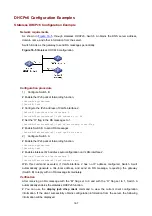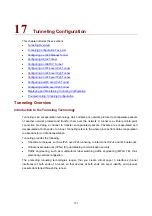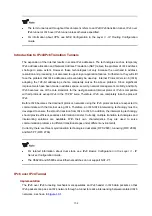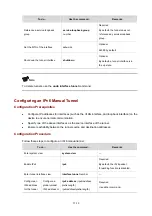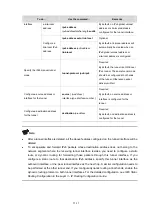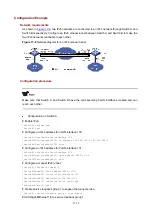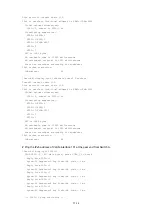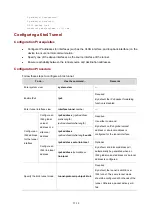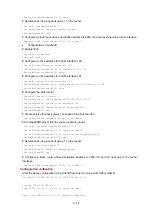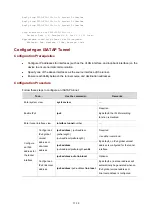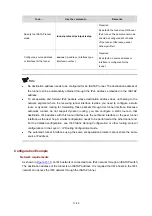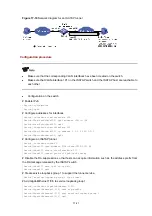
17-11
To do…
Use the command…
Remarks
a site-local
address
ipv6 address
ipv6-address/prefix-length eui-64
By default, no IPv6 global unicast
address or site-local address is
configured for the tunnel interface.
ipv6 address auto link-local
interface
Configure a
link-local IPv6
address
ipv6 address
ipv6-address
link-local
Optional
By default, a link-local address will
automatically be created when an
IPv6 global unicast address or
site-local address is configured.
Specify the IPv6 manual tunnel
mode
tunnel-protocol ipv6-ipv4
Required
By default, the tunnel is a GRE over
IPv4 tunnel. The same tunnel mode
should be configured at both ends
of the tunnel. Otherwise, packet
delivery will fail.
Configure a source address or
interface for the tunnel
source
{
ip-address
|
interface-type interface-number
}
Required
By default, no source address or
interface is configured for the
tunnel.
Configure a destination address
for the tunnel
destination ip-address
Required
By default, no destination address is
configured for the tunnel.
z
After a tunnel interface is deleted, all the above features configured on the tunnel interface will be
deleted.
z
To encapsulate and forward IPv6 packets whose destination address does not belong to the
network segment where the receiving tunnel interface resides, you need to configure a static
route or dynamic routing for forwarding those packets through this tunnel interface. If you
configure a static route to that destination IPv6 address, specify this tunnel interface as the
outbound interface, or the peer tunnel interface as the next hop. A similar configuration needs to
be performed at the other tunnel end. If you configure dynamic routing at both ends, enable the
dynamic routing protocol on both tunnel interfaces. For the detailed configuration,
see IPv6 Static
Routing Configuration in the Layer 3 - IP Routing Configuration Guide.


